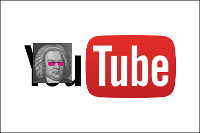Sep 7, 2016
Ten Books - 2016 Part #2
My reading has slowed considerably over the summer for a few reasons, forseen and not, good and not so good. I’m late posting this to boot. If you have been holding your breath in anticipation of its appearance, you are: 1) alone and, by now, 2) dead.
For the rest of you, here is an unexpected waste of bandwidth.
—
-
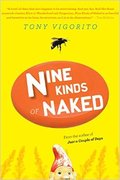 Tony Vigorito - Nine Kinds of Naked (2008)
Tony Vigorito - Nine Kinds of Naked (2008)
A friend recommended this novel to me. For that and for introducing me years ago to Richard Thompson, he is hereby awarded the Bachblog/Minnesotan, “not too bad a dude” virtual tip of the hat. Tony Vigorito is an author worth keeping an eye on (I’ll use my right eye, it’s the one with a reading-distance contact lens in it).What about the book, you might reasonably ask? It is a joyful, absurd romp and an odd love story. It playfully weaves together—with Vonnegutesque deftness—time (and time travel), coincidence, nuclear weaponry, chaos theory, the Golden Bough, a really really big hurricane, and some unforgettably wacky characters. Much too early to compare him to Kurt Vonnegut—this is only his second novel—but unbridled enthusiasm is sometimes okay, isn’t it? (He likely will join Gary Shteyngart, Christopher Moore and others at a damn-funny-and-talented but not-quite-Vonnegut level. Prize-winning, laugh-out-loud stuff.) I will read his debut novel, Just a Couple of Days, and I look forward to more.
-
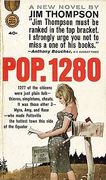 Jim Thompson - Pop. 1280 (1964)
Jim Thompson - Pop. 1280 (1964)
Another dime novel masterpiece by the author of the most chilling crime noir fiction I’ve read. That he somehow manages to incorporate humor into his disturbing tales is a wonder. This one has a strong resemblance to what is generally regarded as his finest work, The Killer Inside of Me. I’d have to flip a coin to choose between the two. -
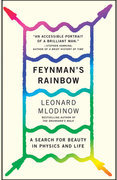 Leonard Mlodinow - Feynman’s Rainbow: A Search for Beauty in Physics and in Life (2011)
Leonard Mlodinow - Feynman’s Rainbow: A Search for Beauty in Physics and in Life (2011)
I expected more of a biography of the great Richard Feynman than this book delivers. Not a bad thing, actually. Just a comment touching on my expectations. What this book is instead is a memoir of the author’s time as a faculty member at Caltech and of Feynman’s role there as his mentor and inspiration.Mlodinow recounts his journey from a promising wunderkind of physics to what he thought of at the time as a less-exalted career as a writer. Was he squandering his degree and talent? Feynman helped him see the truth and (in my view) the science-hungry reading public (if only there were more of us!) is all the richer for his choice. Mlodinow has written popular works on science, including two I enjoyed last year—The Drunkard’s Walk and The Grand Design (with Stephen Hawking). He has also penned screenplays, among them the 2009 film Beyond the Horizon and television’s Star Trek: The Next Generation.
-
 D.H. Lawrence - Lady Chatterley’s Lover (1928)
D.H. Lawrence - Lady Chatterley’s Lover (1928)
I read Chatterley, or started to read it, when I was in high school. I don’t think I finished it. Surely I only picked it up because I knew of its scandalous reputation. I put it down (probably) because it really didn’t provide the titillation I expected.Of course, what could I have known as an immature 16-year-old about a grown woman’s sexuality? (Not sure how much I know now, really.) About halfway through this re-reading I thought I could see profundity in Lawrence’s knowledge of the subject. Then, he reveals the depths of the gamekeeper/lover’s misogyny, and the story’s sexuality (written from the lady’s point of view) seems much more of a projection from a man’s point of view. Which, after all, it is.
Lord Chatterley’s impotence (a result of his wounding in the Great War) as a metaphor for industrial England’s dehumanization of society—think coal mines, belching coal-fired factories, the despoiling of nature, and the cruel exploitation of the working class—is powerful. In light of it, Lady Chatterley’s thirst for beauty and love (and, yes, sexual fulfillment) can be understood as heroic and moral. Her lover’s misogyny—handily explained away by his ill-treatment at the hands of a “bad woman"—is less attractive, to say the least.
-
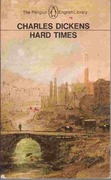 Charles Dickens - Hard Times (1854)
Charles Dickens - Hard Times (1854)
I have been a big fan of the novels of Charles Dickens my entire adult life. I have read all of them, most more than once (as well as the rest of his fiction and at least three biographies). They are low-brow, over-sentimental, preachy, Victorian, and chock full of wildly-improbable coincidence, pathos and (sometimes unfair) caricature. But also, they overflow with heart, comic genius and unforgettable characters and scenes. Before this re-read I hadn’t picked one up in ten years. So why now and why Hard Times (not generally considered one of his best)?I revisited it because while reading Lady Chatterley’s Lover I was struck with a powerful sense of déjà vu. “He’s rewriting Hard Times,” I thought. Well, not quite, but the books do contain remarkable parallels. Both are set in industrial north England’s coal country and both see great spiritual sickness in the cynical exploitation of man and nature. Both feature sympathetic portrayals of honest, hardworking but broken men—broken and exploited by bad, “fallen” women (estranged alcoholic wives). Both men are loved by angelic, inaccessible women. Dickens’s angel Victorian-repressed; Lawrence’s emerging defiant from a renewed post-WW I repression.
Among the least-comic of Dickens’s novels, but not entirely without humor. Josiah Bounderby is a somewhat less frightening buffoon than Donald Trump.
-
 Bill Fawcett - 100 Mistakes that Changed History (2010)
Bill Fawcett - 100 Mistakes that Changed History (2010)
Better idea than the author’s execution of it. Seems as if 80 of the 100 chapters describe mistakes made in or leading up to battles or wars. Well, sure, and who would be surprised? Then (the author insists) “if Alexander/Napoleon/Hitler/Bush hadn’t done that/this/something else, we’d all be speaking Greek/French/German/in monosyllabic words and eating gyros/croissants/sauerkraut/Tex-Mex.” Yeah maybe.A few sketches are moderately interesting/unfamiliar/surprising/plausible. Oh, 3M’s Scotchgard™ and Post-it© notes each merit a chapter, as does New Coke. A handful of other business and/or technological missteps are highlighted, but what could possibly top the cautionary tale of how we might even today be using small, unsticky scraps of paper to write short notes or to mark our favorite pages in The Art of the Deal?
-
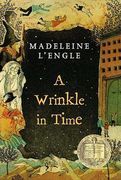 Madeleine L’Engle - A Wrinkle in Time (1963)
Madeleine L’Engle - A Wrinkle in Time (1963)
A delightful sci-fi novel worthy of inclusion on any list of the genre’s best works. It does not make my 45 Great 20th Century SciFi/Fantasy Novels though, owing to its relegation to the “minor leagues” of Children’s Literature. Unfair, I think. (I can’t say anything about its several sequels.) Its Newbery Medal win and its continuing robust sales have been nice consolations for L’Engle and her heirs.This book is often compared with C.S. Lewis’s Narnia series for its Christian-influenced, good-versus-evil moral underpinnings. Wrinkle draws heavily on the Gospel of John. Paradoxically, it is one of the most-frequently challenged books in school libraries: some humorless conservative Christians object to its magic and other supposed heresies.
-
 26 Malcolm Lowry - Under the Volcano (1947)
26 Malcolm Lowry - Under the Volcano (1947)
Powerful book. Not an easy read at any time (I’m sure), and particularly difficult during a (seeming) near-death bout with scopolamine withdrawal. The story portrays a decisive day in the life of an alcoholic British ex-consul living in Mexico, and the ill-fated return of his estranged wife. The story takes place (after an introductory episode set a year after the main event) in a symbolically-significant 12-hour period. Much of it is related through the filter of the protagonist’s excruciating delirium tremens.Now I know I missed much of the author’s symbolism. (Against my usual practice, I read others’ interpretations of the book before writing down any thoughts of my own.) My scopolamine-induced delirium may have provided me with a unique, 4D-like reading experience, but it didn’t do wonders for my critical perception. By the end of the novel I was enthralled but suspected I’d missed much. I had. I hope to read it again and I will try to see the critically-acclaimed 1984 film adaptation.
Volcano was one of only two novels published by Lowry. It ranks #26 on my compilation of great 20th-century novels and #11 on the Modern Library 100 Best Novels of the 20th Century list.
-
 Quinn Fawcett - Embassy Row (1998)
Quinn Fawcett - Embassy Row (1998)
Further adventures of “Sherlock Holmes’s smarter brother” (this one, not that one). Mycroft is trying, presumably, to stave off the Great War. It is still 20 years or so distant, but (as we know) inevitable. This is the second book in the four-novel series. I read the first earlier this year.Bill Fawcett (100 Mistakes that Changed History, above) is one half of the pseudonymous “Quinn Fawcett” authorial team.
-
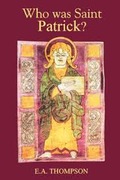 E. A. Thompson - Who was Saint Patrick? (1985)
E. A. Thompson - Who was Saint Patrick? (1985)
A no-nonsense biography of the Irish saint. The author rejects all non-contemporary tales purporting to shine light on the mysterious Patrick’s life and mission. After all, nothing (surviving) is written about him until more than 100 years after his death. And what exists is filled with risible nonsense (his enemy Coroticus is transformed into a fox; he expels snakes from the country—200 years after a Roman historian reported the island to be snake-free).What then can we know about the man? Only what we can glean from the two short and not-entirely-clear writings of Patrick to survive: his Confession and his Epistle to the Soldiers of Coroticus. Thompson examines each in careful detail. We can say that Patrick served in Ireland during the fifth century CE (perhaps 430-490ish), was a poor writer of Latin, a remarkably sincere and humble man, and one of the first bishops to show any interest in the conversion of barbarian peoples. Green beer doesn’t seem all that relevant to his legacy.
| DATE | TITLE |
| 12/09/2019 | Books 2019: #2 Dozen Really Matter? |
| 05/20/2019 | Why Not Both? |
| 04/23/2019 | Books 2019: #1 Take Ten |
| 04/15/2019 | Books 2018: #31 - #37 |
| see also ... | 113 Great 20th Century Novels |
| 46 Great 20th Century Crime Novels | |
| 45+ Great 20th Century SciFi/Fantasy Novels | |
| Books Read (2008-) | |
| Index of Book Posts |
-
Categorically
- Home
- Index
- ALS Bites
- Birding
- Blather
- Bloviation
- Crosswords
- Unbelievable
- Vidiocy and Other Stolen Stuff
Goodies
